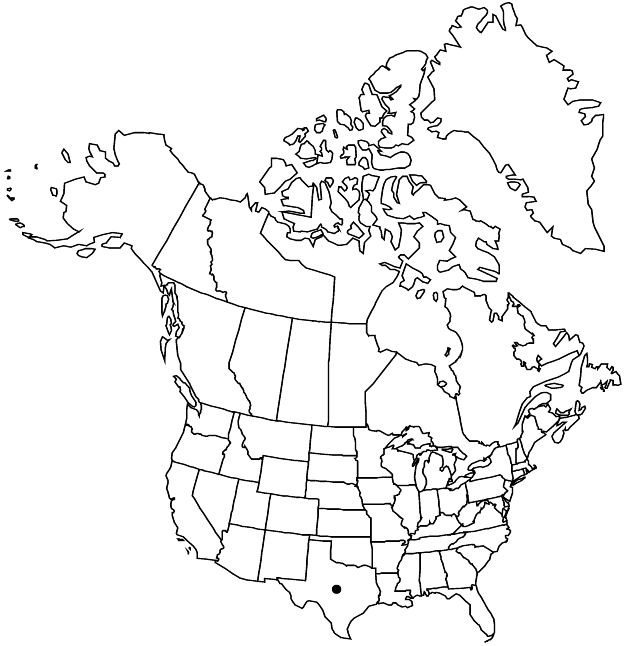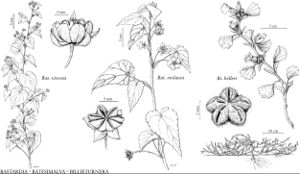Batesimalva violacea
Bol. Soc. Bot. México 35: 26. 1975.
Plants 1.5–2 m. Stems stellate-tomentose and with simple hairs 1–1.5 mm. Leaves: stipules to 0.5 mm; petiole 3/4 to as long as blade; blade discolorous, 6–10 cm, apex acute or acuminate, surfaces densely, velvety pubescent abaxially, sparsely hairy adaxially. Pedicels slender, elongate, 2–6.5 cm. Flowers: calyx 6–8 mm, tomentulose and with long, simple hairs; petals 6–8 mm; staminal column 2–3 mm, glabrous; anthers yellow. Schizocarps 10–12 mm diam.; mericarps with proximal cell partially covered by endoglossum 1 mm. Seeds 2.5 mm. 2n = 32.
Phenology: Flowering fall.
Habitat: Dry, deciduous forests and shrublands
Elevation: 600–800 m
Distribution

Tex., Mexico (Coahuila, Nuevo León).
Discussion
Of conservation concern.
In the flora area, Batesimalva violacea is known from only a single station in Big Bend National Park.
Selected References
None.
